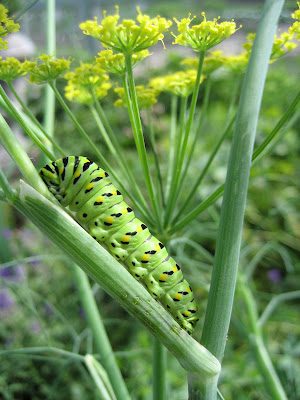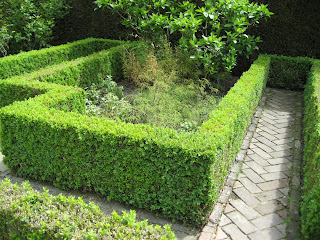mulch (m lch)
lch)
 lch)
lch)n.
A protective covering, usually of organic matter such as leaves, straw, or peat, placed around plants to prevent the evaporation of moisture, the freezing of roots, and the growth of weeds.
A Sonnet for Seasons
Naked mounds of summer, exposed and cold,
Their sultry display now a memory.
A modest shawl too soon could not be sold
To cover a promise so savory.
The weight of winter falls dark upon them.
Subterranean now, the stage is set
To keep awake many a gentle gem
With the simple act of a coverlet.
A hidden sleep until the sun comes back;
If I could, I would make the clock tick quick.
Precious they are kept under the dark black
Until soil swells warm and roots become thick.
Before the spring dew can be rolled away
Let those stirring gems see the light of day!
- Erika Hanson
Because Shakespeare gardened--I'm convinced all inspired people do--I'll bet he mulched too.
Here in the New York, we got our first great snow dump. Near 12" which ain't too shabby this time of year. Even though an arctic chill has settled in, I am warm and toasty in the thoughts of my garden beds.
Each year in December, I do a little something special for garden function and aesthetics. After cutting back perennials and cleaning up, I place upside-down spruce boughs over my plants, making sure to cover and layer the boughs over the soil as well. The boughs are my winter mulch offering my dormant plants moderate insulation, an effective wind-break, and a very festive winter blanket. When the snow falls, as it did this past weekend, the garden beds are now perfectly insulated from any drop/raise in temperature. A temperature-controlled cocoon is created that keep the bulbs from heaving, or the less-established perennials from freezing, and generally keeps everybody happy. While this practice is just short of epiphany, I find it absolutely essential.
Now, the definition of WINTER MULCH: it's a mulch that is applied after the first frost. This moderates the soil temperature, and keeps the soil from freezing and thawing. This freeze/thaw is what causes perennials and newly planted bulbs to heave out of their planted spots. The mulch is applied thickly but does not cover the crowns of perennials, nor does it cover the lowest stems of shrubs or the bark of trees.
Feel free to use "regular" mulch if you feel a heavy winter mulch is something you need to do. If you planted some marginally hardy bulbs or perennials, this is where a thick, heavy mulch would be appropriate. But here's the catch (and why I use spruce boughs): winter mulch should be removed in very early spring (and spruce boughs are really easy to pick up). Because mulch is so good at keeping the soil at a consistent temperature, if the mulch is not removed, it will keep the soil cooler for a longer time come spring. As a result, bulbs and perennials alike will take much longer to emerge. If you are like me, I can't wait for my gardens to warm up in the spring.
If it isn't too late to put down a winter mulch where you garden, I suggest you try it. If anything, the spruce boughs will give you a little lift instead of staring out at a sea of desolate frozen soil. There's nothing more depressing than a garden-turned-tundra. On a lighter note, it's almost January, and spring is not reeeaaallly that far away.










 The Fall room looked great in mid-spring.
The Fall room looked great in mid-spring.



























